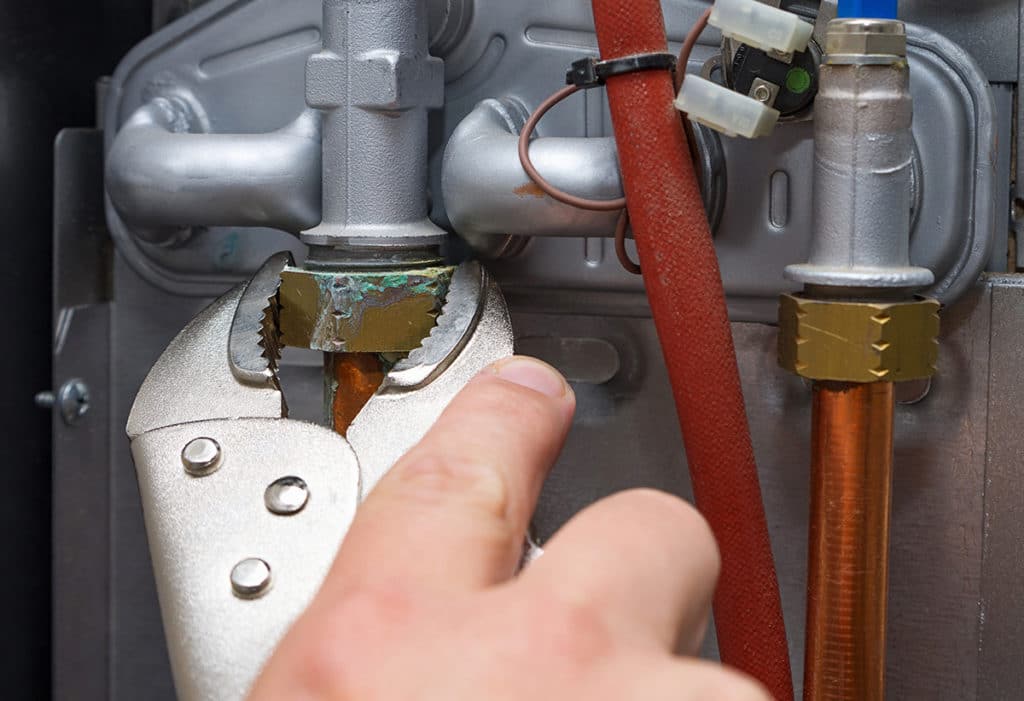Find some water on the floor near your furnace? Don’t freak out! While it may not be normal, with our help it’ll certainly be a simple fix. After all, at AFM Heating & Cooling, we have the skilled team and resources to find simple solutions for any and all HVAC problems!
Condensing vs. Conventional
Furnaces can leak water for a lot of different reasons, but the most common by far is a condensation leak. This is why one of the first things an HVAC technician will want to know is whether your furnace is a condensing (high-efficiency) furnace, which is morel likely to produce condensation, or a conventional (standard-efficiency) furnace, which should never be around too much moisture. One way to tell the difference is to glance at your unit’s AFUE (Annual Fuel Utilization Efficiency) rating sticker. It’s a little yellow energy guide sticker that can be found attached to most newer units. Any rating over 90 percent means your system is high-efficiency, or condensing, while any rating below 90 percent signifies a standard-efficiency, or conventional, unit. Can’t find a sticker? Peek around for its exhaust pipe or vent instead. This trick of the trade will help you determine the type of furnace you have right away. If your pipe is white PVC pipe, it’s a condensing unit; if it’s metal, it’s a conventional unit.
Possible Leak Causes
Because condensing units by design take much longer to extract heat, the gasses become cool and “condense,” eventually making its way down a special drain in the floor made for its discreet disposal – hence the name. In these situations, leaks are usually just a result of clogged tubing, a drain obstruction, damage to the condensation line, or a simple problem with the condensation pump. Conventional furnaces, on the other hand, should never have any water or excessive condensation to worry about. If you do, you may have an incorrectly fitted exhaust/flue pipe on your hands. If the problem is not related to condensation at all, it could be a clog in the internal drain system causing water to rise into your furnace, or a problem with the humidifier leaking inside the system. The worst possibility, however, is a faulty secondary heat exchanger, which mean having your entire system replaced – though this only happens to high-efficiency units.
The most important thing to keep in mind is, while not all furnaces leaking water are doomed for replacement, the only way to know for sure and get the unique problems fixed for good is to get ahold of our experts at AFM Heating & Cooling! Call AFM Heating & Cooling at 734.464.6700 for a free consultation, or simply fill out the form in the sidebar, today.


